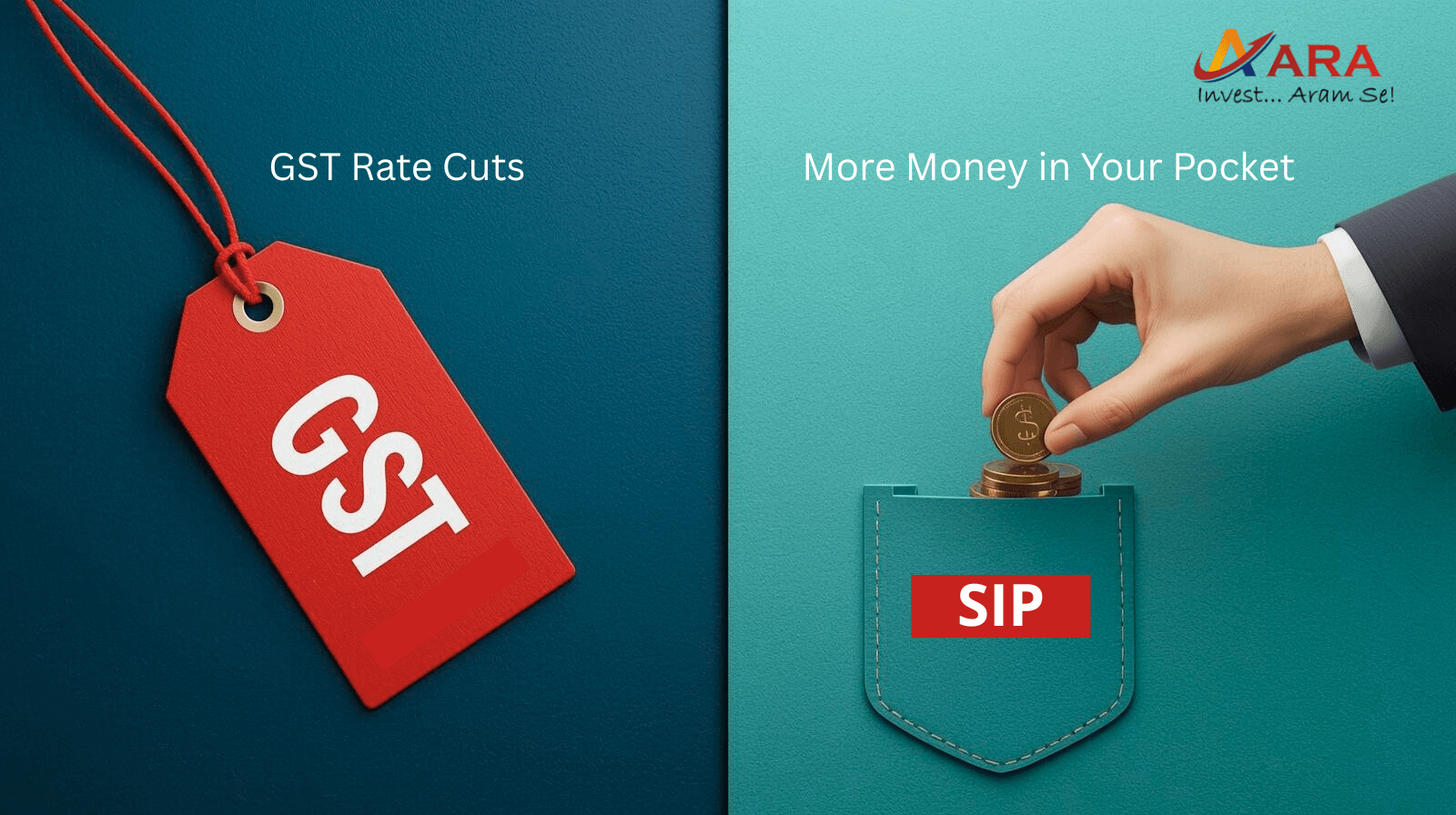At the start of this year, we received a big bonanza and an opportunity to save and invest. There will be no income tax up to an annual income of ₹12.75 lakhs. I am sure you are already investing these savings of anywhere between ₹1800 to ₹7000 every month. Are you?
Now, there is more good news!!! If your monthly grocery spend is ₹20,000, from September 22nd, you will pay only about ₹18,750, a saving of about ₹1,250 every month!! How? Because of GST rate cuts!
But before we see what has changed, let’s quickly understand GST.
GST (Goods and Services Tax) is an indirect tax on the supply of goods and services. Introduced in July 2017, it replaced multiple taxes like service tax, VAT, cess, and surcharges.
There are four types of GST:
- SGST – State Goods & Services Tax
- CGST – Central Goods & Services Tax
- IGST – Integrated Goods & Services Tax
- UTGST – Union Territory Goods & Services Tax
Currently, GST is applied in slabs of 5%, 12%, 18%, and 28%, depending on the item. Essential items like food and daily groceries are placed in lower slabs to reduce the burden on households.
During his Independence Day speech, the Prime Minister promised a festive “gift.” And as a gift, GST rate cuts have been announced, effective from September 22nd.
What’s new:
- Two main GST slabs remain: 5% and 18%.
- A special 40% slab applies only to luxury and harmful goods.
- About 99% of items in the existing 12% slab are shifted to 5% slab
- About 90% of items in the 28% slab have been shifted to the 18% bracket.
- Many food items that earlier attracted 12% GST are now going to be under the 5% slab or zero slab.
- Health and insurance premiums are now fully exempt from GST.
What Does This Mean for You?
With the GST rate cuts, our out-of-pocket expenses will be reduced without any effective changes in our lifestyles. Your weekend partying will cost you less, even though you haven’t made any changes. Your cost of buying fancy things will come down even though you have not reduced your standards.
💰 Daily groceries
If your monthly grocery spend is ₹25,000, you’ll pay only about ₹23,435, a saving of about ₹1,562 every month. Over a year, that’s ₹18,000+ saved effortlessly.
💰 Family budget
For a household spending around ₹3 lakhs annually on consumables, the savings would be nearly ₹4,000.
💰 Insurance premiums
If your premium is ₹3,000/month, after the GST cut, you will pay roughly ₹2,542, a saving of about ₹500 per month.
If we club this saving with the tax amount saved (no income tax for annual income of up to 12.75 lakhs), the amount turns out to be substantial.
What Do We Do With These Savings?
When extra money is left in our pockets, the temptation to spend is difficult to overcome. You may want to go out more frequently, you may want to gift something to a dear one, you may want to spend it off!
Honourable Finance Minister, Smt. Nirmala Sitharaman ji has also urged us to make the most of the savings from GST rate cuts by investing them wisely. When such guidance comes from the highest levels, it becomes our responsibility to make the best use of this opportunity.
We have to understand that this is also a golden opportunity to strengthen our finances and build a bright future.
Here is how you can put these savings to work:
- Top up existing SIPs – Reach your financial goals earlier by increasing your monthly investments.
- Start a new SIP – Use the surplus to revive financial goals you once thought were out of reach.
- Enhance your insurance cover – Protect your family better with additional life or health coverage.
- Open a Recurring Deposit (RD) – If you prefer safety over high returns, this is a stable option.
This is not just about tax and GST relief, it’s about a chance to save more, invest more, and achieve financial freedom faster.
Let’s not let this opportunity slip by. The money saved today can be the foundation of tomorrow’s wealth.

Shreedhara is the Founder & Director of Ara Financial Services Pvt. Ltd. He has an experience of over 2 decades in Financial Service Industry with majority of it in guiding individuals and institutions on their investments requirements.









